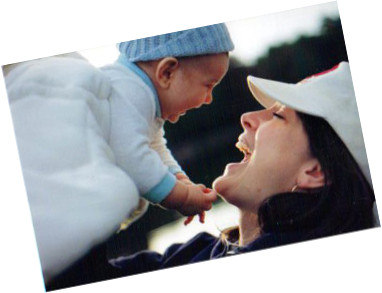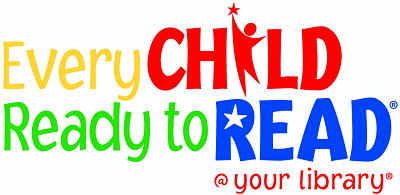Website Redesign Coming December 1-5!

Talking is one of the most important things we can do with our children to get them ready to learn and to read. Talking teaches all of the early literacy skills and components young children need to know to be ready to learn to read. When we engage children in any of the other practices — Singing, Reading, Playing, or Writing — we should also always be Talking! How often we talk with children — and how we talk — makes all the difference.
All children hear 'business talk' - talking about what needs to get done, such as 'It's time to go,' or 'Wash your hands,' or 'Don't touch that!' Children hear approximately 600 business talk words per hour.
Some children hear far more words than that - 1500 more words per hour. Those words are 'extra talk' or 'play talk' or 'language dancing.'
Extra talk:
Tends to be richer
Contains a wide variety of words
Is more responsive and encouraging
Gives more information, more back-and-forth conversation, and more interesting and unusual words
Encourages children to question, explore, put ideas into words, and figure things out
It's this kind of talk that is essential to helping children get ready to learn to read. It makes all the difference between children who struggle to read and those who excel.
Verbalize a child's gestures.
Imitate the child's sounds and actions - you can have a back-and-forth conversation even with a small infant! Imitate the babbles, add words and babble some more. Use parentese, exagerrated words that are fun to use with baby and help baby hear the language more easily.
Repeat what the child says and add descriptive words or other embellishments.
Ask open-ended questions.
Think out loud.
Strive for five! Take multiple turns in talking between the child and adult. To encourage a child to respond,the adult can ask questions or use open ended sentences, such as 'Tell me more,'  'That's interesting,' and 'I remember when...'
'That's interesting,' and 'I remember when...'
Here are several examples of using Talking to help build early literacy skills:
A young child gestures toward something. The adult puts words to what the child is trying to communicate. The adult waits and then asks the child to use those words. Those words may be babble, but an important two-way conversation is happening and the baby is learning important components of oral language.
An adult asks a question, perhaps about a picture in a book. Wait at least five seconds for the child to respond. Then the adult can answer the question, perhaps describing the pictures in the book or what is happening. The child is learning language that he or she will use later.
Adults can talk about the reasons for anything and everything around them.
Adults can encourage children to talk about things that have happened or are happening around them. They can encourage pretend play and acting out stories. Adults can add to what the child is saying, using descriptive words, synonyms, and bits of information the child may not know.
Adults can think aloud - about what they are doing, or expressing curiosity about various things. Always allow time for the child to jump into the conversation. Adults can narrate the day, describing what they will be doing first, next, and so on. Try to add two embellishing sentences to what is said. For example, a parent might say, "Put your coat on. We are going shopping." Then add at least two sentences to that command - perhaps explaining what they will be shopping for and why.
Sources:
• Ghoting, Soroj. Storytimes for Everyone. Chicago: ALA. 2013.
• Parent Cortical Mass. "What Is 'Language Dancing' and Why Is It Important to Parents?" Web 19 April 2015.
• Wallis, Catriona. "How to Encourage Young Children to Start Talking and Expressing Themselves." HuffPost. Parents the Blog. April 30, 2014. Web 28 April 2015.